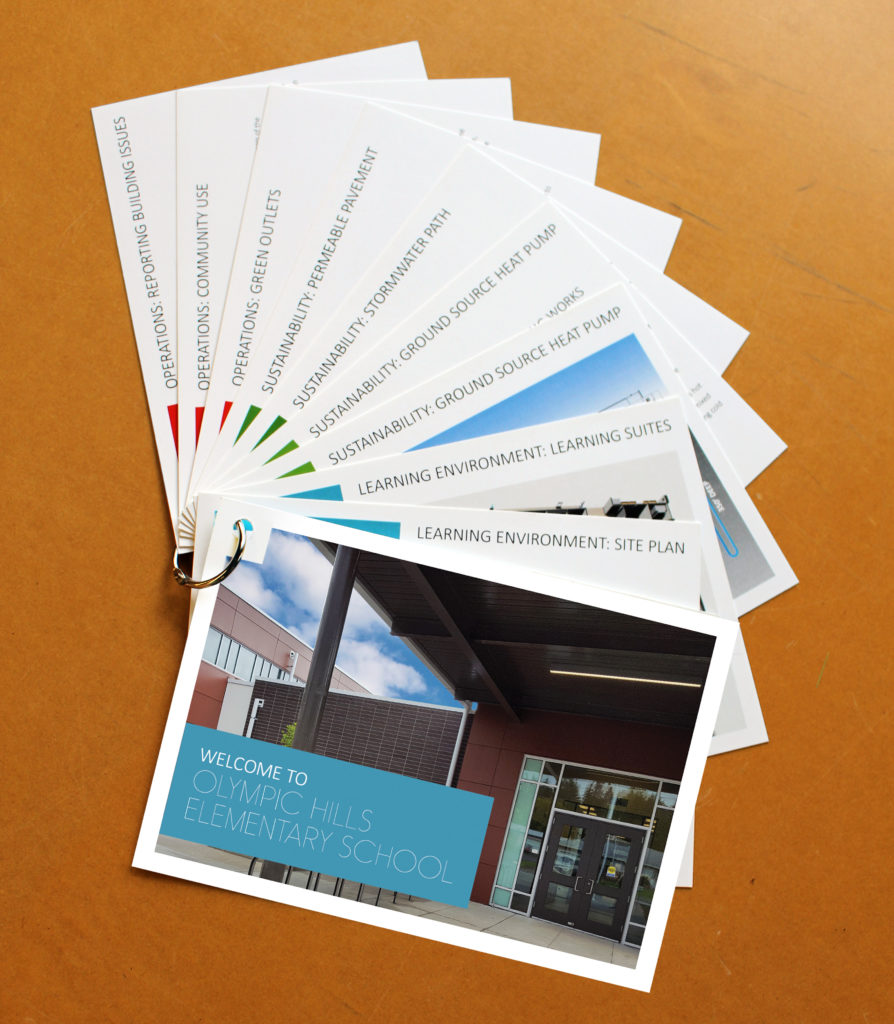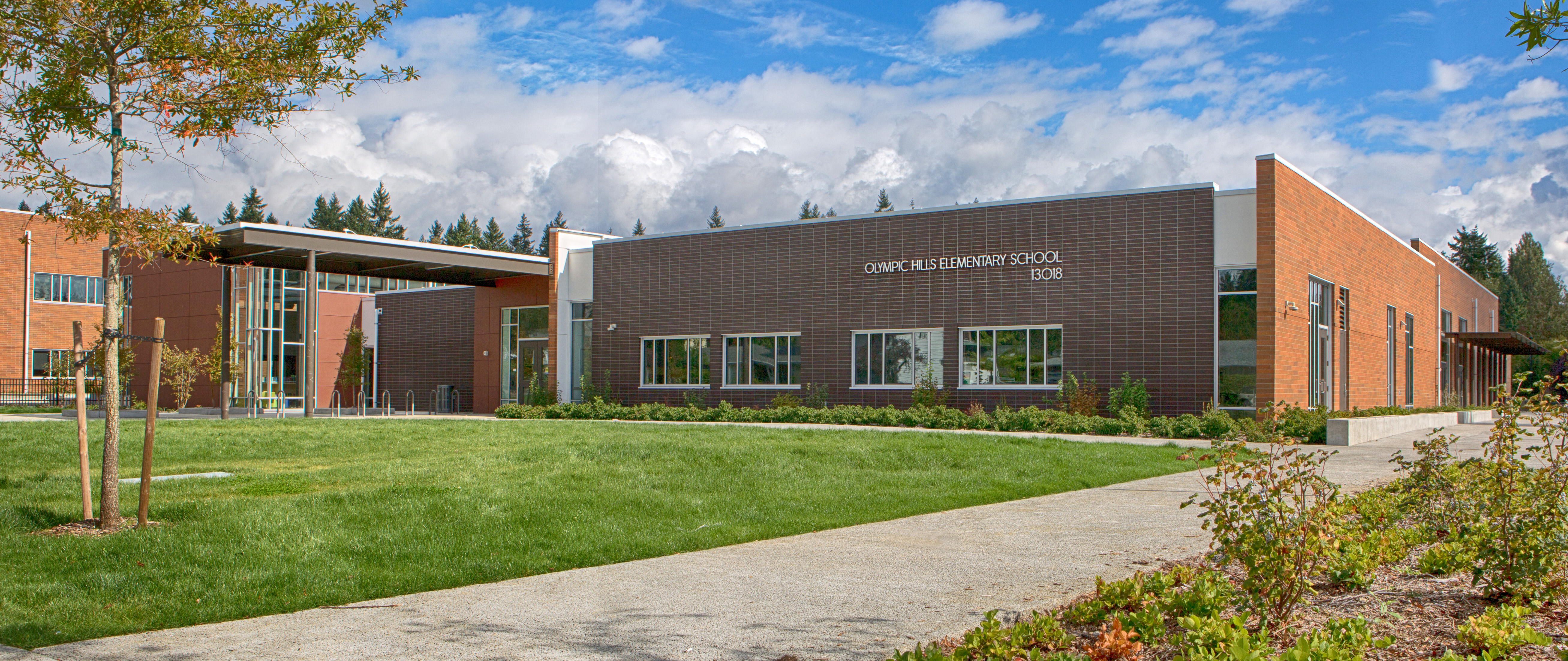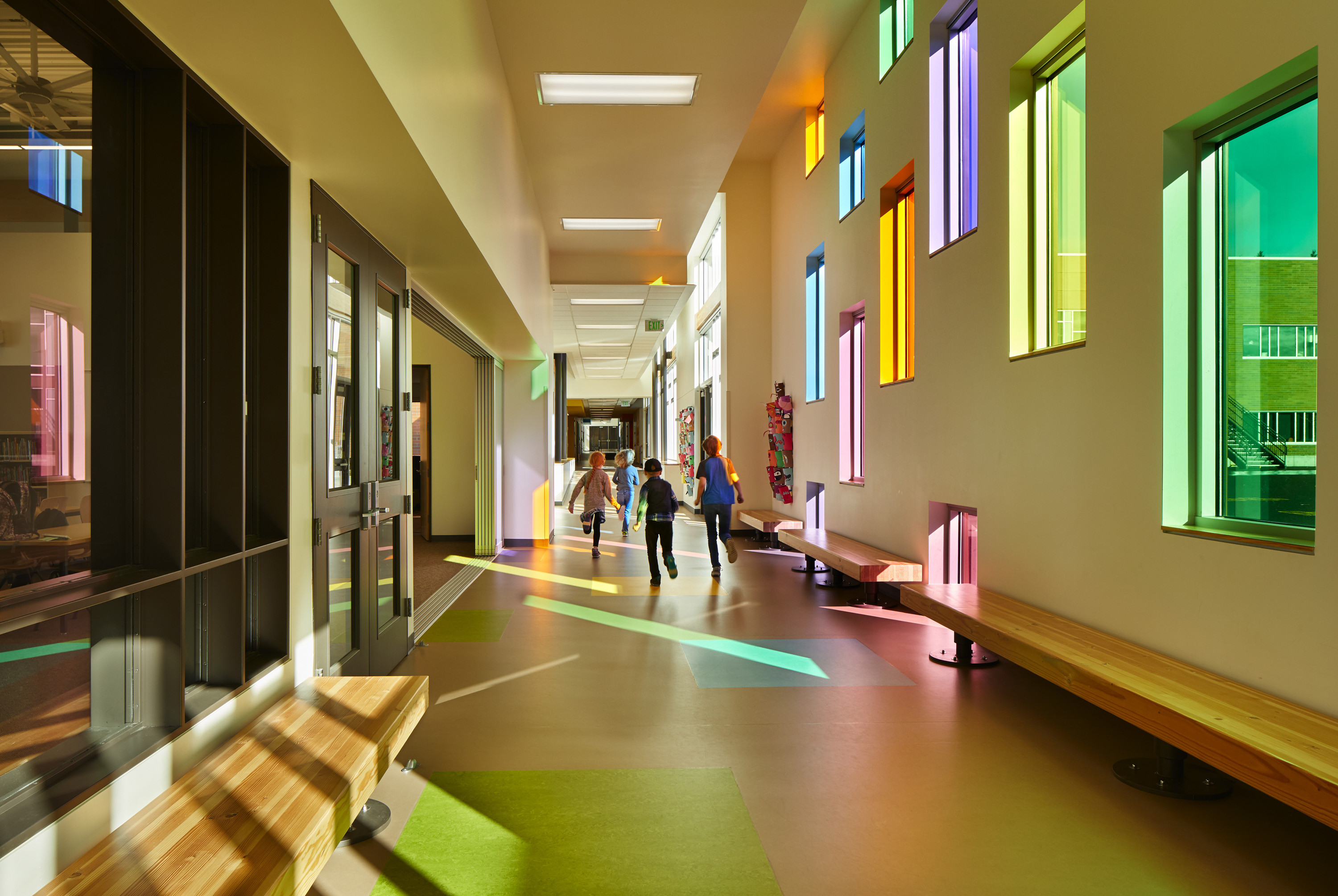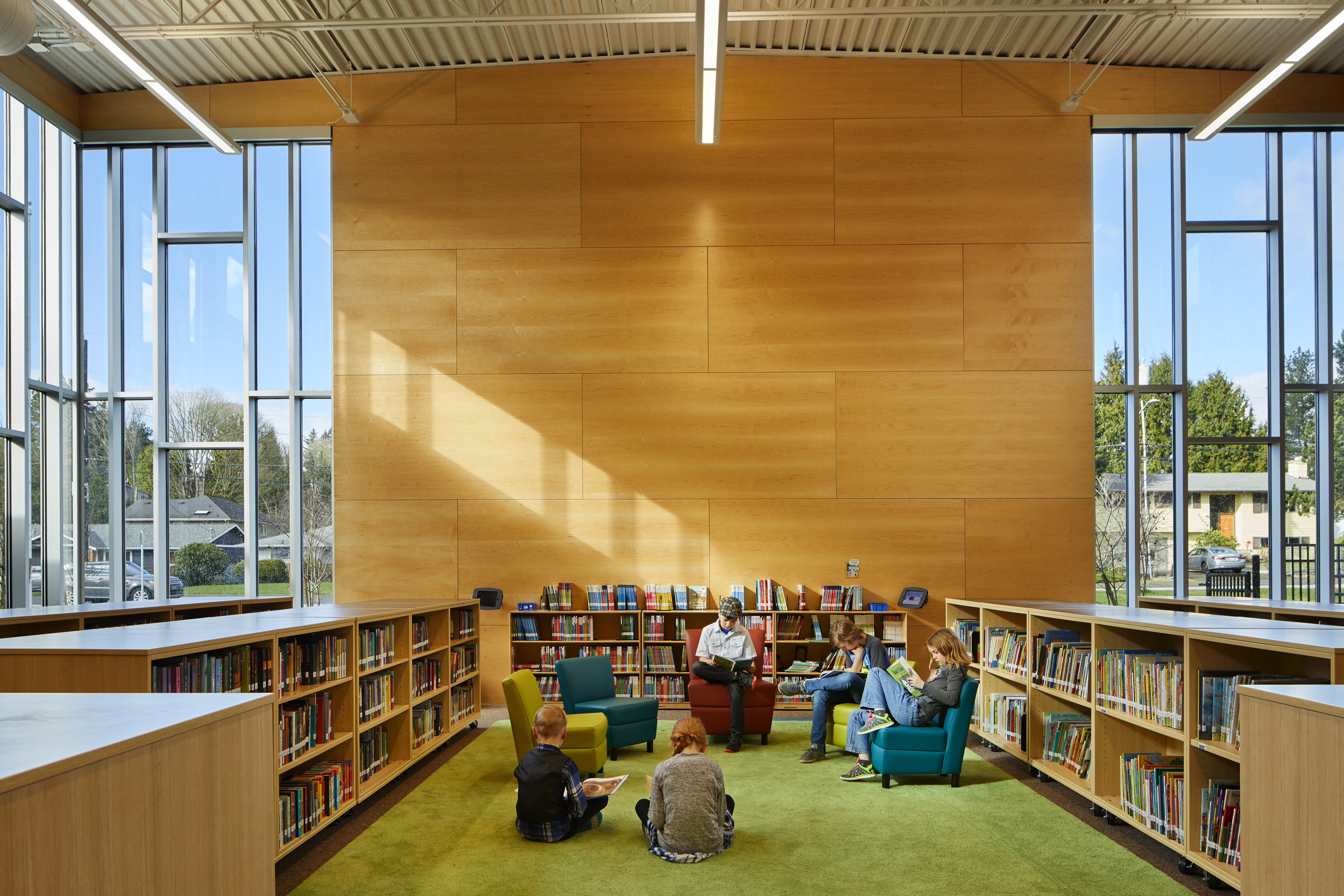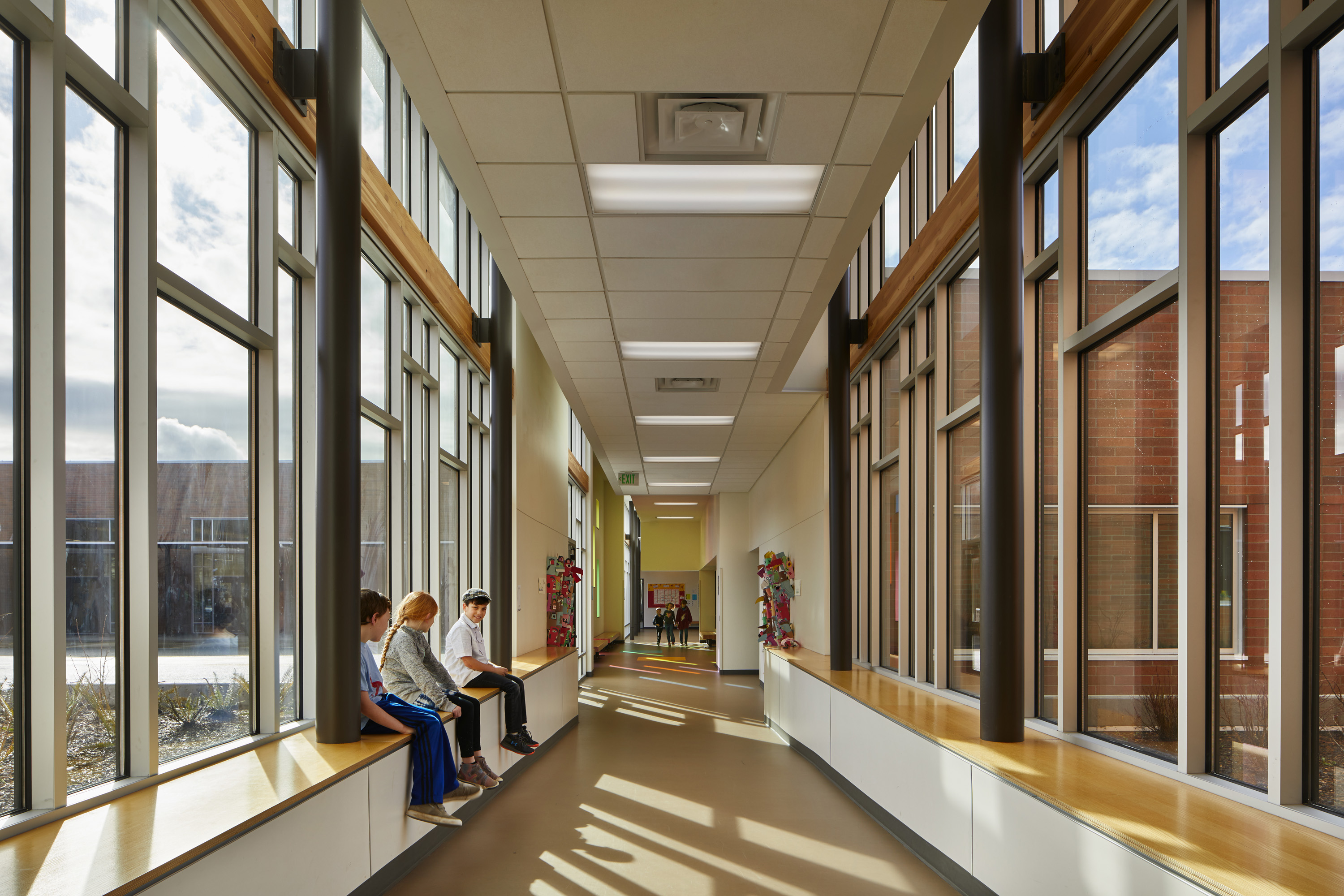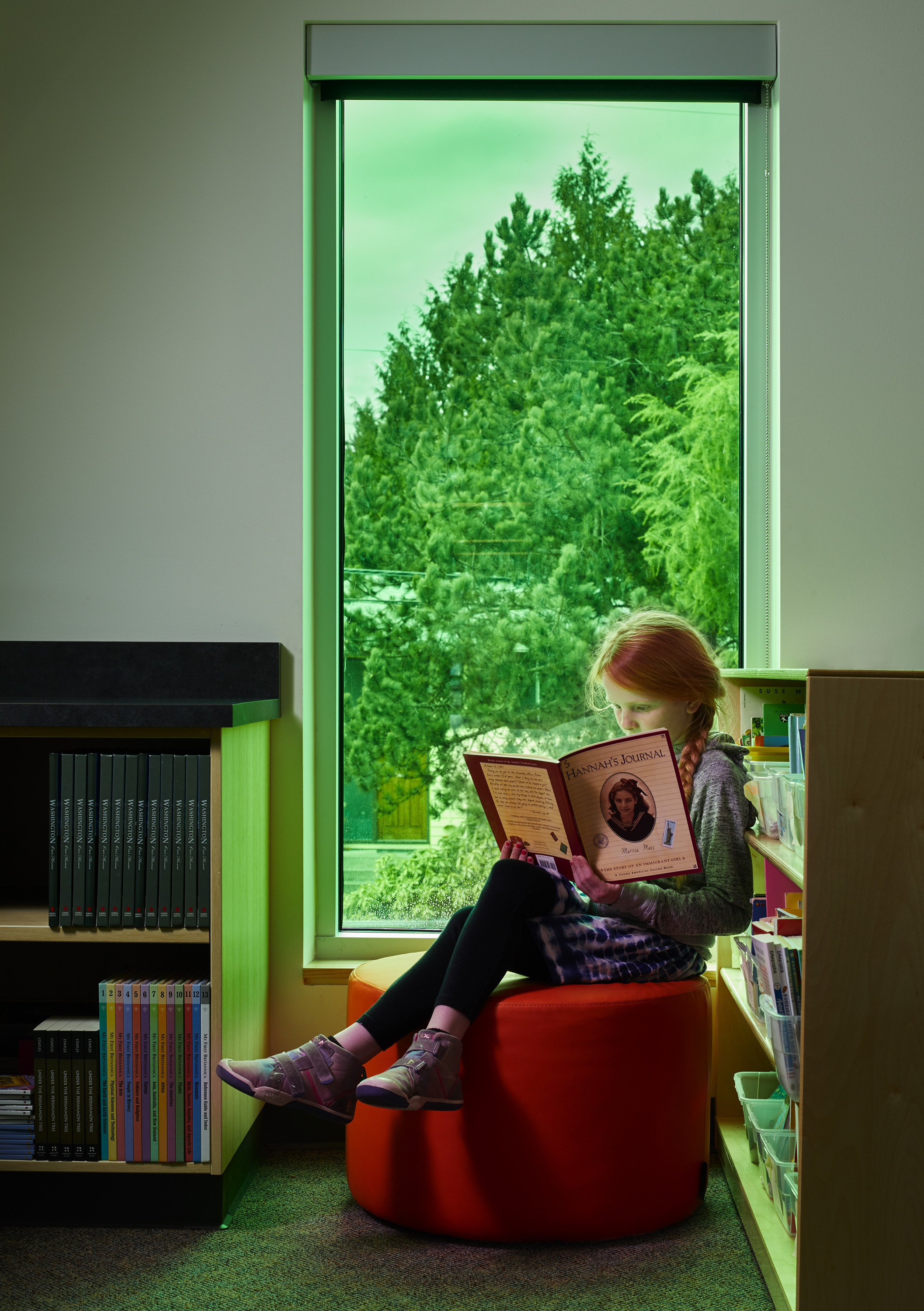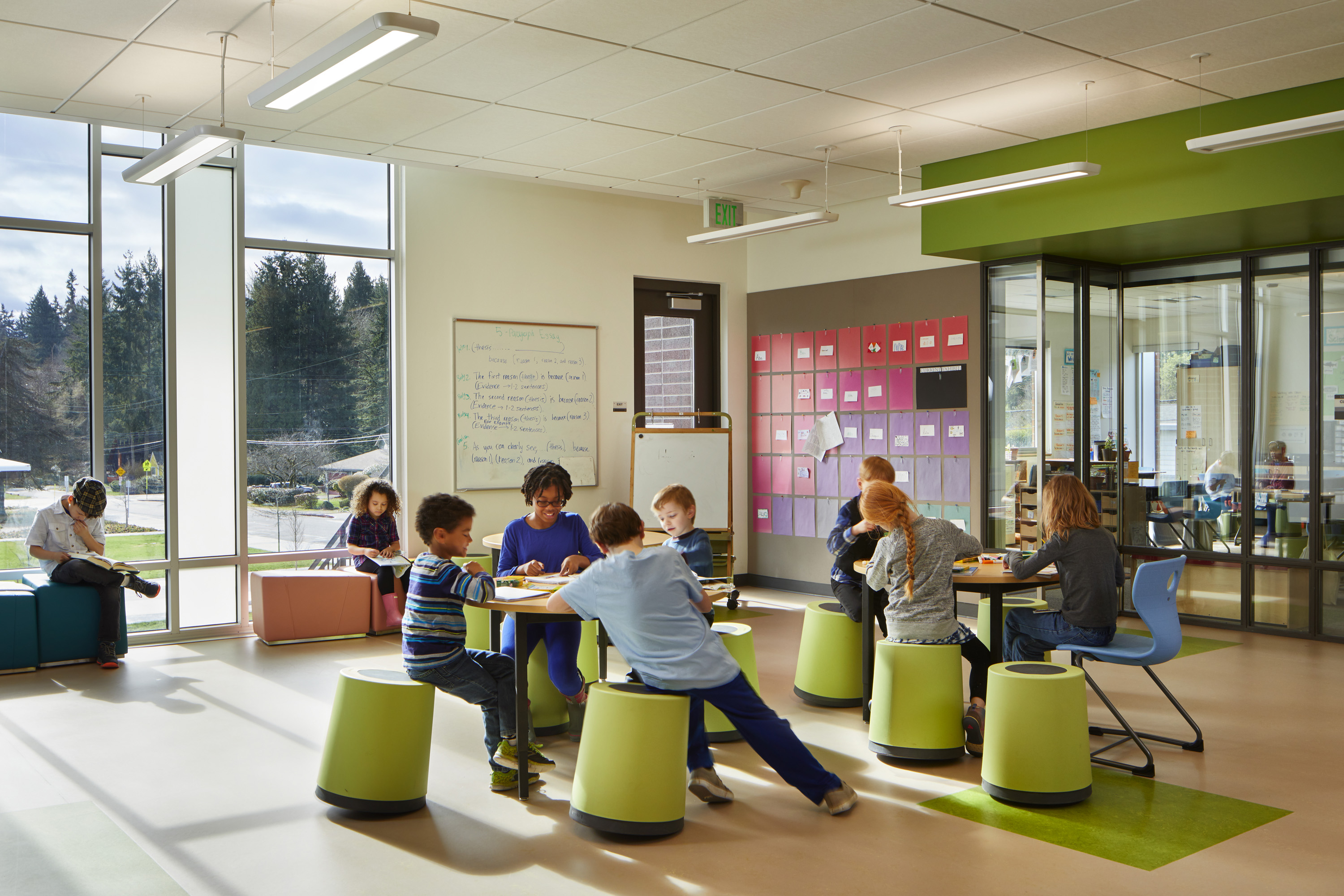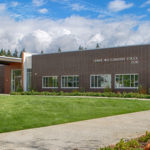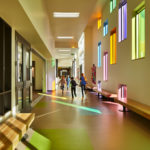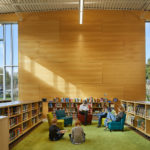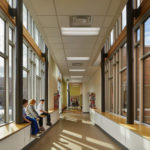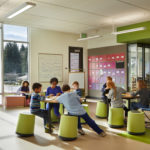Olympic Hills Elementary School was designed to support Differentiated Instruction pedagogy, meeting each student where they are learning best and providing an environment in which the whole child can thrive. At the same time, the new building has significantly reduced the operational carbon footprint and serves as an example for the District, the community, and educational designers about being a better steward of the environment.
Washington state has one of the nation’s most stringent energy codes, and biannual code updates ensure new buildings are minimizing their overall energy consumption.
AIA 2030
Architectural firms participating in the 2030 Commitment saved 17.8 million metric tons of CO2 in 2017 alone, which is equivalent to the carbon that would be sequestered by 21 million acres of forest – nearly the size of the state of Maine! As signatories to the AIA 2030 Commitment, our goal is to reduce carbon emissions on all our projects, track progress, and evaluate the impact design decisions have on energy performance. We believe the way we address energy and climate issues through the built environment is crucial to our mission.
When this project started, it was benchmarked against the 2015 target to achieve a 70% reduction in energy consumption as tracked by the buildings Energy Use Index (EUI). Knowing this was a challenging target, we were thrilled to learn that the verified performance of 18.4 EUI exceeded our goal by nearly 15%.
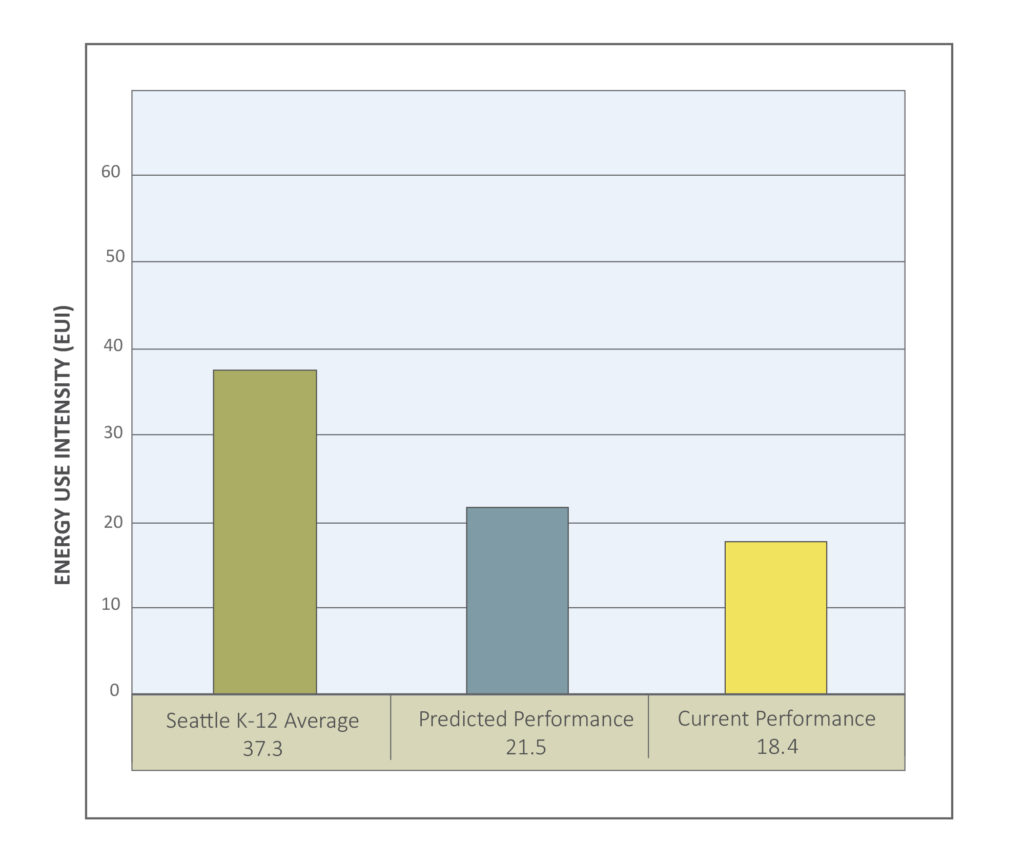
With future projects needing to meet a higher energy reduction rate in 2020, our mechanical engineer, Brian Cawley of Hargis Engineers, noted that adding heat recovery to classrooms and installing 100kw of PV’s on the roof could achieve another 15% EUI reduction.
Greenhouse Gas Emissions (GGE)
At the outset of design, we pursued an “All-Electric” school, eliminating the use of fossil fuels across the entire site. What does that mean for Seattle Public Schools, their students and teachers, and the community?
It starts with an incredibly clean energy source. The City of Seattle generates its own electrical power and less than 2% of the energy is created by sources that generate greenhouse gases!
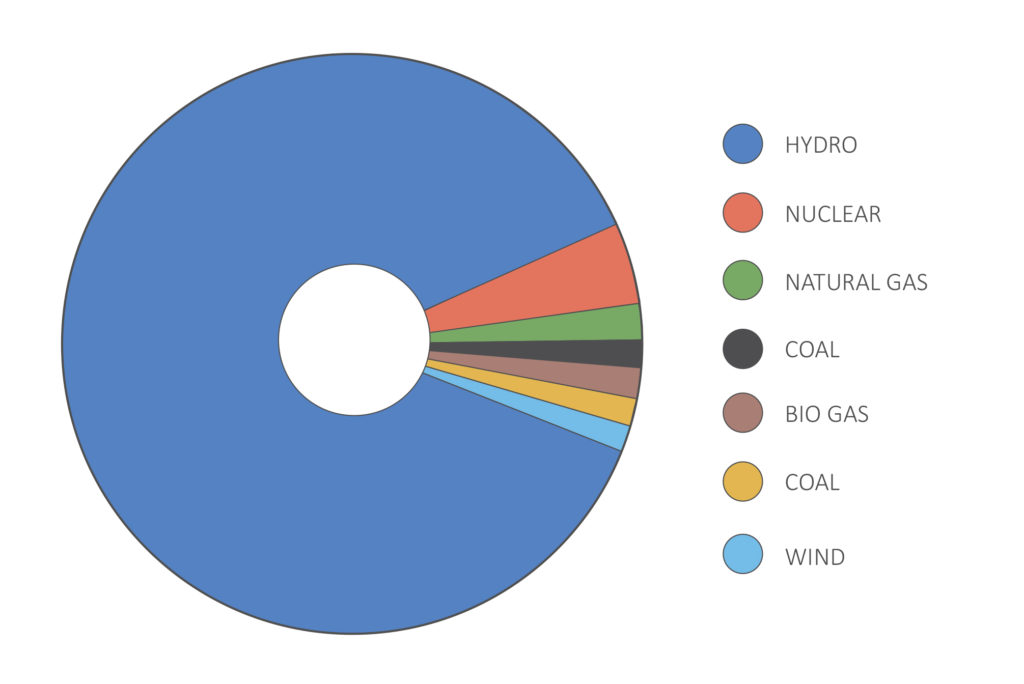
Thoughtful building orientation and judicious placement of windows minimize the need for supplemental lighting. The high-performance building envelope results in a minimal 5-degree heat loss overnight. Compiling this all together results in an annual utility bill (heat and lighting) of just over 65-cents per square foot per year. (around $100/student each year).
Based on actual consumption data, Olympic Hills only contributes an average of 23.2 kilograms of GGE per day. That is the equivalent of driving a typical car 57 miles. Over time, each new building that Seattle Public Schools completes makes a significant impact.
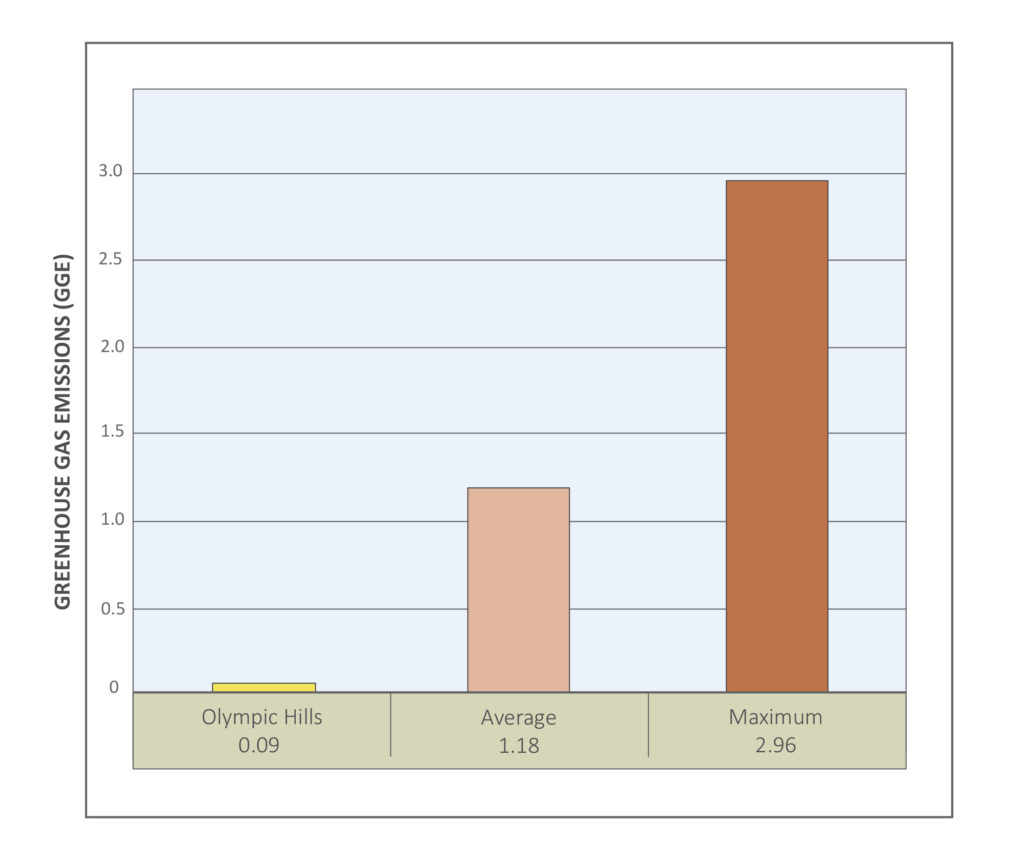
Plug Loads
The real story of the success of Olympic Hills is grounded in the daily habits of the teachers and students. As the built environment gets more efficient each code cycle, the habits of the users and what they plug-in to the building accounts for over half of the annual consumption of the building.
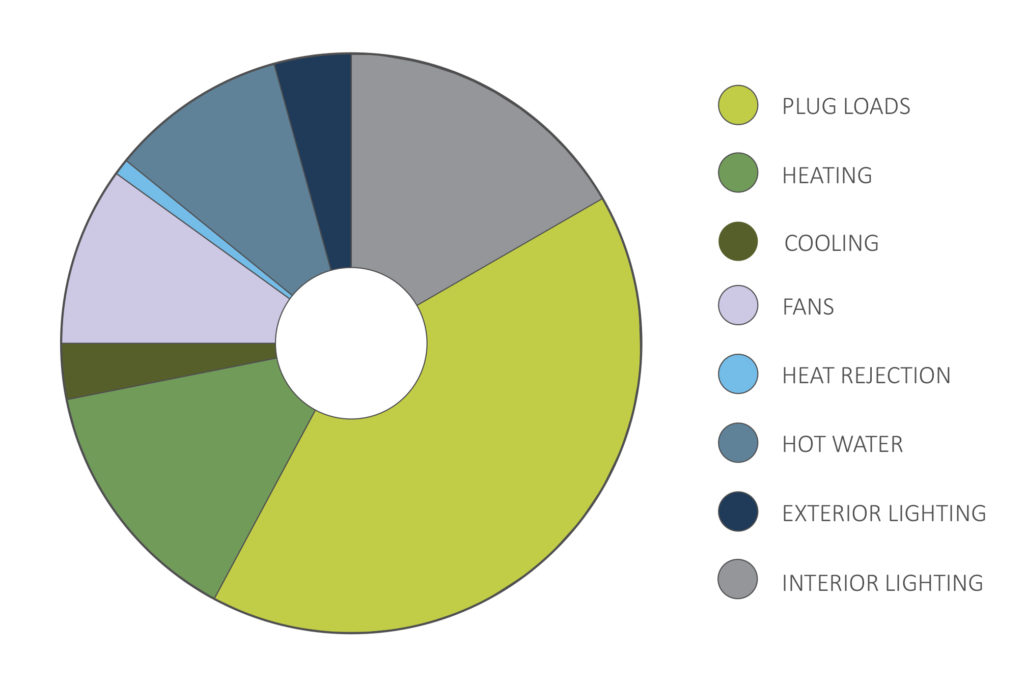
The City of Seattle energy code exceeds the state code on many levels, and in particular, utilizes mandatory ‘green plugs’ that de-energized each night to ensure conservation. Seattle Public Schools has verified that Olympic Hills has the lowest plug-load consumption of energy in the district.
As part of the project, we created a simple User’s Guidebook that identifies the manual and automatic energy systems in the building and explains the ’why’ behind the green-plugs. By raising the awareness regarding this system, there is little to no circumvention of this system. This guidebook was provided to everyone who works in the building and survives digitally allowing new educators to become acquainted with the way the building operates.
